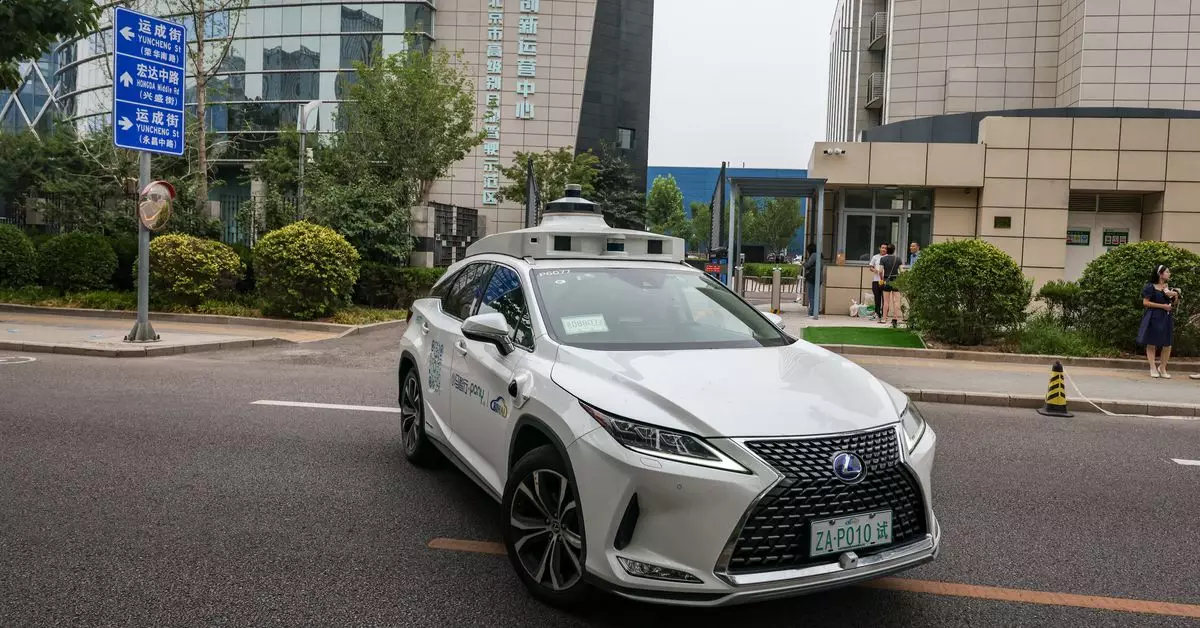The competition for dominance in the autonomous vehicle (AV) arena has intensified, particularly as major players from China and the United States adopt contrasting strategies. In an unexpected twist, General Motors (GM) recently made headlines by withdrawing financial support for its troubled robotaxi venture, Cruise. Meanwhile, across the Pacific, Pony.ai, one of China’s leading autonomous vehicle companies, declared an ambitious plan to scale its robotaxi fleet dramatically from approximately 250 to at least 1,000 vehicles by 2025. This expansion is fundamentally supported by a strategic partnership with GAC Aion, a key player in China’s automotive sector, thereby positioning Pony.ai for significant growth in major Chinese cities such as Beijing, Shanghai, Guangzhou, and Shenzhen.
As the industry develops, the disparity in the available resources and regulatory environments between the two nations becomes increasingly evident. Pony.ai’s ability to leverage a combination of affordable electric vehicles, government incentives, and a lenient regulatory landscape significantly bolsters its growth prospects. In stark contrast, American automakers find themselves hindered by regulatory challenges and cautious approaches to advancing full autonomy in vehicles.
The current state of affairs for American automakers presents a daunting picture. GM’s withdrawal from Cruise is not an isolated incident; Ford has also shuttered its Argo AI robotaxi project, indicating a notable retreat from the race towards comprehensive autonomous vehicle deployment. Both companies are now pivoting towards enhancing advanced driver-assist technologies for personal vehicles rather than pursuing the full autonomy offered by robotaxis. This shift raises serious questions about the viability of the US’s strategy in the rapidly evolving world of transportation.
Moreover, the U.S. government’s mounting apprehension over China’s growing influence in AV technology has led to stringent regulatory proposals. In the spring of 2023, the Biden administration announced new restrictions aimed at curbing the import and sale of connected vehicle software from China, labeling it an “acute” threat to national security. This protective stance has found further expression in tariffs targeting Chinese EVs and vital components essential for autonomous driving, further complicating the landscape for American players seeking to compete.
In contrast, China continues to demonstrate a robust commitment to advancing its autonomous vehicle industry. Alongside Pony.ai’s aggressive expansion, Baidu—a notable competitor in the AV landscape—has its own strategies in motion to reduce vehicle costs. The company aims to bring down prices to around $30,000, while also pursuing collaborative efforts with manufacturers like Geely to produce driverless cars. Such collaborations, combined with inexpensive manufacturing capabilities, set the stage for an ecosystem where AVs can thrive.
Despite the seemingly insurmountable obstacles facing American enterprises, projections indicate that the competitive gap will continue to widen. As American companies signal a retreat from ambitious plans, their Chinese counterparts are poised to capitalize on this opportunity. Pony.ai, for instance, already averages about 15 rides per vehicle daily, accumulating over 26,000 trips weekly—a striking figure that highlights the significant operational scale at which the company is positioned.
While progress abounds, profitability remains a far-off goal for virtually every player in the AV sector. The Financial Times reports that Pony.ai’s recent public offering reflected a 40% drop in valuation from two years prior, exemplifying broader market skepticism concerning the viability of these enterprises. With no major AV operator currently achieving profitability due to high operational expenses, the sector is at a critical juncture.
Questions persist regarding the viability of the Chinese model, where government support and market conditions favor rapid scaling. The potential relaxation of vehicle deployment restrictions to suburban regions may unlock new revenue streams and opportunities for scaling service areas. However, American companies could find their expansion aspirations further stymied by legislative gridlock and public sentiment opposing increased AV presence, as seen in cities like San Francisco, where complaints about blocked emergencies and infractions on public safety have emerged.
The Future of the Autonomous Vehicle Landscape
As the US confronts a complex web of regulatory hurdles and public pushback, the contrasting clarity of China’s path emphasizes a critical consequence: the potential for exacerbated disparities in autonomous vehicle capabilities between the two powers. Despite the emergence of efforts to establish a federal framework governing self-driving technology, the lack of consensus among lawmakers may inhibit the establishment of coherent policies just as China gains further footholds.
The question remains: can the United States reinvigorate its ambitions in the field of robotaxis or will it find itself relegated to the shadows of a rapidly advancing China? The answer may lie in a balanced approach that harmonizes innovation with public safety, incentivizes growth without stifling competition, and leans into collaboration rather than retreat. America’s response today will determine whether it can reclaim its position in this transformative landscape.


Leave a Reply